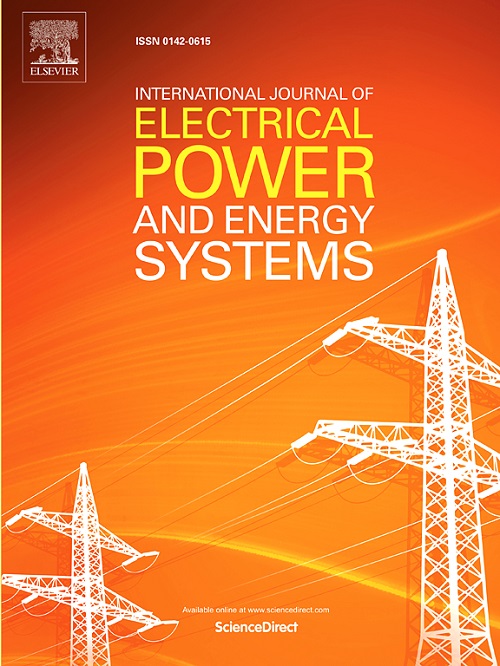Coordinated control of grid-following and grid-forming energy storage for virtual inertia response considering frequency modal characteristics
IF 5
2区 工程技术
Q1 ENGINEERING, ELECTRICAL & ELECTRONIC
International Journal of Electrical Power & Energy Systems
Pub Date : 2025-04-19
DOI:10.1016/j.ijepes.2025.110686
引用次数: 0
Abstract
Grid-following energy storage (GFL-ES) and grid-forming energy storage (GFM-ES) will coexist for a certain period into the future as one of the frequency regulation resources in low-inertia power systems. However, differences in synchronization mechanisms and inertia implementation approaches lead to significant variations in frequency response characteristics between GFL-ES and GFM-ES. The modal characteristics of GFL-ES’s virtual support capability further complicate the coordination control. To address this issue, this paper proposes a coordinated control method of GFL-ESs and GFM-ESs for virtual inertia response considering frequency modal characteristics. First, the differences in virtual inertia support characteristics between GFL-ES and GFM-ES are analysed based on a unified structural model. Subsequently, a quantitative analysis is conducted to investigate the mapping relationship between the modal inertia of the GFL-ES and changes in the frequency nadir time as well as control parameters. Then, considering the system’s initial frequency change rate constraints and the remaining capacity of energy storage, the virtual inertia control parameters of GFL-ES and GFM-ES are coordinated and allocated based on the unified structure model to effectively balance the virtual inertia support power of energy storage systems with different characteristics. Finally, simulation results demonstrate that the proposed method can effectively coordinate GFM-ES and GFL-ES with varying response characteristics, ensuring that the total virtual inertia support capability meets the expected requirements, demonstrating strong adaptability.
© 2017 Elsevier Inc. All rights reserved.
考虑频率模态特性的随网与成网虚拟惯性响应储能协调控制
随网储能(GFL-ES)和成网储能(GFM-ES)作为低惯性电力系统的调频资源之一,在未来一段时期内仍将共存。然而,由于同步机制和惯性实现方式的差异,GFL-ES和ggm - es的频率响应特性存在显著差异。GFL-ES虚拟支撑能力的模态特性进一步使协调控制复杂化。针对这一问题,本文提出了一种考虑频率模态特性的GFL-ESs和ggm - ess虚拟惯性响应协调控制方法。首先,基于统一的结构模型,分析了GFL-ES与ggm - es在虚拟惯性支撑特性上的差异;随后,定量分析了GFL-ES的模态惯量与频率最低点时间和控制参数变化的映射关系。然后,考虑系统初始频率变化率约束和储能剩余容量,基于统一结构模型对GFL-ES和ggm - es的虚拟惯性控制参数进行协调分配,有效平衡不同特性储能系统的虚拟惯性支撑功率;仿真结果表明,该方法能够有效协调不同响应特性的ggm - es和GFL-ES,保证总虚拟惯性支撑能力满足预期要求,具有较强的适应性。©2017 Elsevier Inc.版权所有。
本文章由计算机程序翻译,如有差异,请以英文原文为准。
求助全文
约1分钟内获得全文
求助全文
来源期刊
CiteScore
12.10
自引率
17.30%
发文量
1022
审稿时长
51 days
期刊介绍:
The journal covers theoretical developments in electrical power and energy systems and their applications. The coverage embraces: generation and network planning; reliability; long and short term operation; expert systems; neural networks; object oriented systems; system control centres; database and information systems; stock and parameter estimation; system security and adequacy; network theory, modelling and computation; small and large system dynamics; dynamic model identification; on-line control including load and switching control; protection; distribution systems; energy economics; impact of non-conventional systems; and man-machine interfaces.
As well as original research papers, the journal publishes short contributions, book reviews and conference reports. All papers are peer-reviewed by at least two referees.

 求助内容:
求助内容: 应助结果提醒方式:
应助结果提醒方式:


